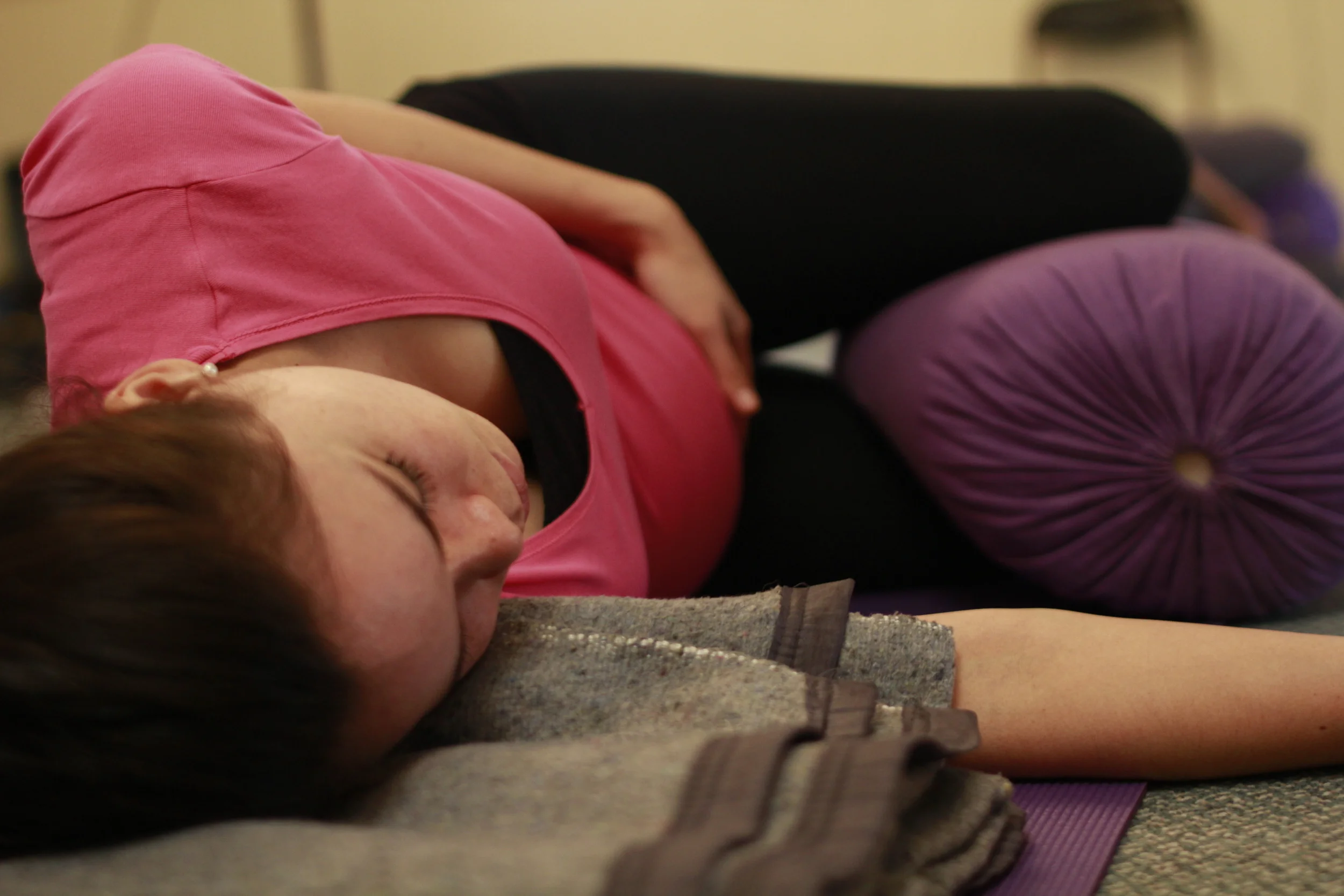Relaxation Techniques in Pregnancy & Labour
by Suzanne Swan
Our Active Birth Workshop or Antenatal Private Session is led by advanced childbirth educator and senior yoga teacher, Suzanne Swan. Suzanne has been doing this work for over eighteen years and her experience affirms that having the partner involved in the birth process, working hands on as a team with the mother, promotes a positive birth experience and enhances family bonding.
"A strong intention, relaxed body and an open mind are the main ingredients for an Active Birth. It is the way a woman behaves when she is following her own instincts and the physiological logic of her body" Janet Balaskas
Remember Birth is instinctive and when left undisturbed women naturally choose relaxed, open body positions, utilise slow breathing patterns, make deep sounds and rhythmic movements to birth their babies safely.
Relaxation technique - “consistent practice will move you from learning to knowing”
When we practice meditation, breathing and yoga exercises we enter into a state of focused awareness. Modern science calls this state of being 'the relaxation response' (Hubert Benson, 1996), in yoga we call it 'Turiya' or the fourth state. A state of mind where you are in touch with your inner knowing and 'beingness'.
In your daily practice of 5-10mins you can enter this state:
1. Via yoga nidra: progressively relaxing your muscles from your head to feet
2. Practicing the yogic breath: breathe slowly letting the exhalation become longer than your inhalation
3. Practice listening to the sound of your breath or the sensation of the breath leaving the nostrils
4. Womb breathing: As you inhale direct the breath into your womb, imagining the womb becoming light and full, learn to breathe feed your baby this way
5. Repeating a mantra (word) silently to yourself as you inhale & exhale
6. Remain focused on your chosen object, whenever your mind wanders bring it back to your focus
When the mind quiets down, the body follows suit and this is a particularly useful practice during pregnancy and at birth. The nervous system of the unborn child can be healed of any prenatal disturbances when the mother’s muscular systems are progressively relaxed (Robert Newman, 2005).
Dr Gowri Motha (2004) is an English obstetrician who teaches deep relaxation skills as part of her birth preparation practices. She says that the quickest way to full dilation is through deep muscle relaxation, which improves blood flow to the whole body. In a state of relaxation, the brain exhibits alpha waves and these automatically result in the release of endorphins, the body’ natural painkillers. In labour, alpha waves also increase the release of the hormone oxytocin and cause the muscles within the pelvis to become elastic. You may experience much less discomfort.
Pelvic Clock or Internal relaxation
Internal relaxation can make labour contractions more effective. Focusing on relaxing around the pelvic clock between contractions and during contractions is an extremely effective tool. Tension inside can slow labour down. Having more control over how to maintain inner relaxation, using your self awareness, can reduce the discomfort connected to dilation and the downward movement of the baby.
Draw a line from your pubic bone to just above your tailbone (ie. The crack of your buttocks) and another line from your right hip to your left on the same plane as your pubic bone. You have now mapped the clock face. Call the pubic bone 12pm, the sacrum 6pm, right hip 3pm and left hip 9pm.
Pay attention to the inside of the circle and mentally place the cervix in the middle of that circle. The tissue is like the face of the clock. Dilation is full when there is no more face.
Now tense up inside the whole clock as much as you can. Hold the tension for a few moments then relax. Can you feel the difference?
Now tense up around each hour of the clock face. Just tense up inside and hold the tension. Now direct your breath into the that area and let go of the tension with your exhale. Do this four more times, paying close attention to the relaxation as you soften and relax there.

